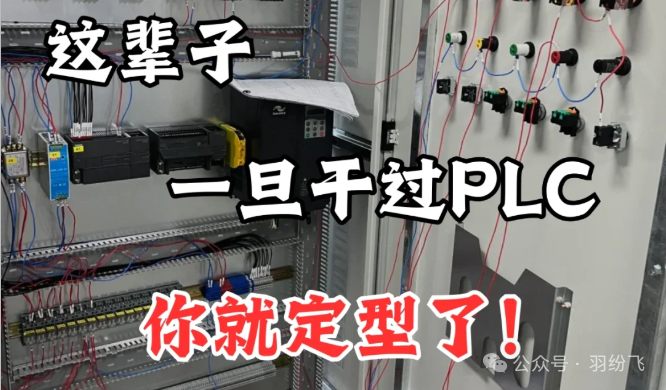
PLC Intelligent Algorithms: The Application of Federated Learning Technology Balancing Data Privacy and Model Performance!
Introduction
Hello everyone! Today I want to share with you a **new technology that will impress the industrial automation field — PLC Federated Learning Algorithm. Don’t worry, I will explain this seemingly “black technology” concept in the simplest terms.Mastering this technology allows your smart factory to protect data privacy while obtaining high-quality machine learning models, truly achieving the best of both worlds!** Want to know how this is achieved? Keep reading!
What is PLC Federated Learning?
Let’s start with an analogy. Imagine you are the director of a hospital wanting to develop an AI model that can diagnose a certain disease. The traditional method is **to centralize all patient data in one place for training, but this faces serious privacy issues. Federated learning is like training models locally at each hospital and then onlyexchanging model parameters** without sharing the raw data.
In the PLC field, federated learning allows **multiple PLC devices to collaboratively train a more powerful intelligent algorithm without sharing raw data**. Each PLC trains the model locally and then only uploads model updates, which are aggregated by a central server to generate a global model.
Why Use Federated Learning?
You might ask: “Why should my factory share data with other factories?” Let me illustrate with a few vivid examples:
-
Protecting Trade Secrets: Your production process parameters are your core competitiveness. Traditional centralized learning requires uploading all data, while federated learning **only uploads model updates**, keeping the raw data permanently on the local PLC. -
Improving Model Generalization: The data volume of a single factory is limited, and the trained model is prone to overfitting. Through federated learning, the model can learn **common features from multiple factories** without needing to know which factory the data comes from. -
Compliance with Data Regulations: With the implementation of data protection regulations like GDPR, **keeping data on-site** is becoming increasingly important. Federated learning is an ideal solution to meet these regulations.
Specific Implementation Methods for PLC Federated Learning
Next, I will introduce several federated learning methods suitable for PLCs:
1. Federated Averaging Algorithm
This is the most basic federated learning algorithm. A central server initializes a global model and sends it to all participating PLCs. Each PLC trains for a few rounds with local data and then only uploads the changes in model parameters. The server collects all updates and calculates a weighted average to generate a new global model.
2. Differential Privacy Enhancement
To further protect privacy, **carefully designed noise** can be added before uploading model updates. This way, even if someone intercepts the updates, they cannot reverse-engineer the raw data. It’s like adding ice cubes to a cocktail; it doesn’t affect the overall taste but protects the recipe.
3. Secure Multi-Party Computation
For particularly sensitive parameters, encryption techniques can be used to allow multiple PLCs to **jointly compute a function**, but each PLC can only obtain the final result without knowing the inputs of other PLCs. It’s like several merchants calculating average profits, but no one knows the specific profit figures of others.
Practical Application Case
To help everyone understand better, I will share a practical application case:
A certain automotive parts group has five factories, all using PLCs to control production lines. They wanted to develop an intelligent model that can **predict equipment failures**, but each factory was unwilling to share its production data.
After adopting federated learning:
-
Each factory’s PLC **
trains a local failure prediction model** -
Each night, model updates are **
encrypted and uploaded** to the group server -
The server aggregates all updates to generate a new global model
-
The new model is **
distributed to all factories**’ PLCs
Result: After six months, the accuracy of failure predictions improved by 40%, and **no raw data left the factory. The group’s technical director said: “It's like gaining the experience of five factories without needing to know their secret recipes!**”
Considerations and Challenges
Of course, PLC federated learning is not without challenges:
-
Communication Overhead: Although better than transmitting raw data, frequent exchanges of model updates still require a stable network connection.It is recommended to synchronize during non-production hours. -
Heterogeneous Devices: Different factories may have different PLC models, requiring **a unified model interface standard**. -
Incentive Mechanism: How to encourage factories to continue participating? Consider a model of **distributing benefits based on contribution**.
How to Start Trying?
If you want to try PLC federated learning in your factory, I suggest starting with the following steps:
-
Assess Feasibility: Check if your PLC supports running lightweight machine learning models, such as Siemens S7-1500 TM NPU modules. -
Start Small: First, select 2-3 similar PLC devices and try simple federated learning tasks, such as **energy consumption prediction**. -
Establish Trust Mechanisms: Clarify data usage rules with other participants, and consider using **blockchain technology** to record contributions. -
Monitor Model Performance: Closely monitor the performance of the global model in each factory to avoid **negative transfer** phenomena.
Interactive Questions
-
What data in your factory needs special protection? What data can be safely shared?
-
Does the PLC model you use support running machine learning models?
-
If you consider adopting federated learning, what concerns do you have?
Conclusion
PLC federated learning technology opens up a **new path that balances privacy and performance. Data stays on-site, while intelligence enters the factory**, which is not only a technological innovation but also a shift in mindset.
I hope this article has inspired you! If you have any questions or want to share your experiences, feel free to leave a comment. Let’s explore the infinite possibilities of PLC intelligence together!
ShareSaveViewLike